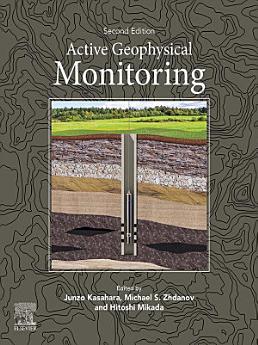Active Geophysical Monitoring: Edition 2
À propos de cet e-book
À propos de l'auteur
Hitoshi Mikada is a Professor at Kyoto University, Japan. He received both M.S. and D.Sc. Degrees in geophysics from the University of Tokyo in 1983 and 1994, respectively. He started his professional career as an interpretation engineer in the petroleum industry. In 1991, he started his academic career as a research associate of the Volcano Research Center of the Earthquake Research Institute of the University of Tokyo, and as a senior scientist in the Deep-Sea Research Department of Japan Agency for Marine-earth Science and Technology (JAMSTEC) in 1999-2004. In 2004, he moved to Kyoto University to become in charge of the Geophysics laboratory. His main interest includes research on theories and praxis in seismic scattering, wave propagation in attenuating and anisotropic media, seismic data processing, electromagnetic exploration, geophysical logging, etc.
Dr. Michael Zhdanov is a distinguished professor in the Department of Geology and Geophysics at the University of Utah in Salt Lake City, USA, and the director of the Consortium for Electromagnetic Modeling and Inversion (CEMI). He is also the founder and CEO of TechnoImaging LLC. Dr. Zhdanov is a leading expert in the field of theoretical and applied geophysics and is the author of more than 400 papers, including more than 15 monographs published in English, Russian, and Chinese, and holds more than two dozen patents. Professor Zhdanov is a full member of the Russian Academy of Natural Sciences, a fellow of the Electromagnetics Academy, USA, and a senior member of IEEE. He received one of the highest awards of the International Society of Exploration Geophysicists, an honorary membership award, in recognition of his distinguished contributions to exploration geophysics and to the advancement of the profession.
Junzo Kasahara received B. S., M.S., and D.Sc. degrees in Geophysics from Nagoya University in 1965, 1967, and 1970, respectively. Between 1970 -1986 and 1988-2004, he was the assistant, associate, and full professors at the university of Tokyo. He worked in marine seismology. During 1974,1976, and in 1979, was the visiting associate professor of University of Hawaii. In 1986, he joined Schlumberger Japan as manager for seismic interpretation and the logging tool design. During his academic works, he published three books from the University of Tokyo Press. He was awarded the professor of emeritus of the University of Tokyo. In 2004, he joined Tono Geoscience Center as a senior researcher, where he worked on the ACROSS project. Between 2004 and 2008, he served for the extension of the Japan Continental Shelf. Currently, he is the principal investigator for the geothermal project and visiting professor at the University of Shizuoka.





